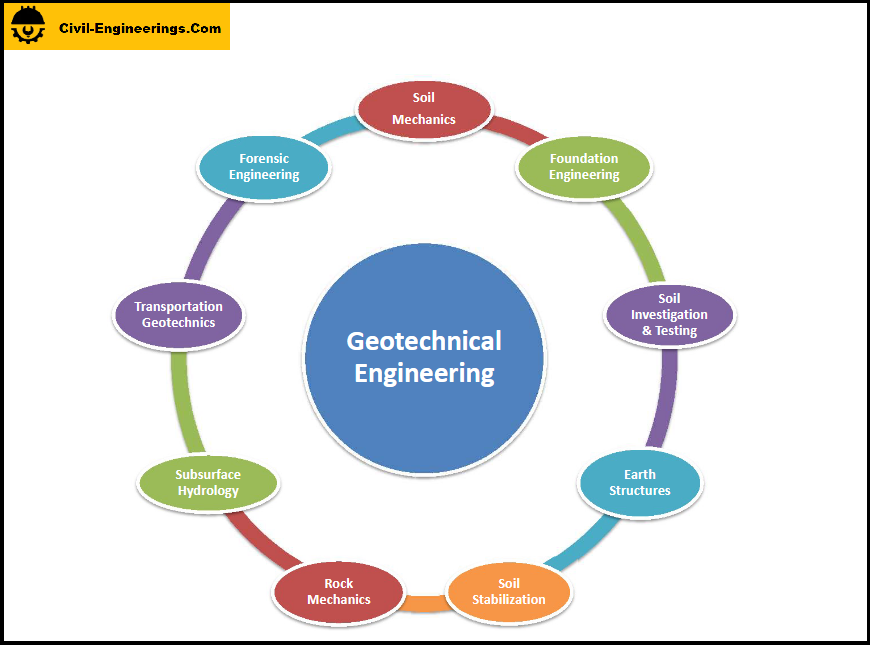Specialized Geotechnical Engineering Solutions - Questions
All About Specialized Geotechnical Engineering Solutions
Table of ContentsThe Ultimate Guide To Specialized Geotechnical Engineering SolutionsSome Known Details About Specialized Geotechnical Engineering Solutions Specialized Geotechnical Engineering Solutions Can Be Fun For EveryoneThe Of Specialized Geotechnical Engineering Solutions
They carry out site examinations, accumulate samples, do research laboratory examinations, and analyze information to examine the viability of the ground for building and construction tasks. Based on their findings, geotechnical designers give referrals for foundation design, incline stability, maintaining frameworks, and reduction of geotechnical dangers. They team up with other experts, such as architects, structural engineers, and building and construction groups, to make certain that geotechnical factors to consider are incorporated right into the general project design and application.
Foundation Style: Geotechnical designers play a crucial function in making foundations that can safely support the intended structure. They evaluate the soil problems and load requirements to figure out the suitable structure type, such as superficial foundations (e.g., footings), deep foundations (e.g., piles), or specialized techniques like soil improvement. They think about factors such as negotiation restrictions, birthing capability, and soil-structure interaction to establish ideal foundation designs.
Some Known Details About Specialized Geotechnical Engineering Solutions
Below are some kinds of geotechnical engineers: Foundation Designer: Foundation engineers concentrate on making and assessing foundations for structures - Specialized Geotechnical Engineering Solutions. They analyze the dirt problems, tons requirements, and website features to figure out the most suitable foundation type and style, such as shallow foundations, deep structures, or specialized techniques like pile foundations
They perform area screening, gather samples, and evaluate the accumulated data to characterize the dirt properties, geologic developments, and groundwater problems at a site. Geotechnical Instrumentation Designer: Geotechnical instrumentation engineers concentrate on tracking and measuring the behavior of dirt, rock, and structures. They install and maintain instrumentation systems that check aspects such as dirt settlement, groundwater levels, slope movements, and structural variations to analyze performance and supply very early cautions of potential problems.
In the workplace environment, geotechnical engineers use specialized software tools to execute calculations, develop designs, and evaluate information. Specialized Geotechnical Engineering Solutions. They prepare records, review job specs, connect with customers and staff member, and coordinate job tasks. The workplace setup provides a favorable setting for research, analysis, and cooperation with other experts associated with the project
They often see job websites to conduct site examinations, evaluate geotechnical problems, and gather data for evaluation. These visits involve traveling to various places, occasionally in remote or challenging terrains. Geotechnical engineers may perform soil tasting, conduct examinations, and screen building and construction tasks to guarantee that the geotechnical elements of the project are being executed correctly.
Specialized Geotechnical Engineering Solutions Can Be Fun For Anyone
Geotechnical designers likewise function in specialized geotechnical reference laboratories. Geotechnical research laboratory engineers work thoroughly in these settings, taking care of testing devices, running instruments, and taping information.
Keeping Wall surfaces: Developing walls that hold back soil to stop landslides and offer security on sloped surfaces. Embankments and Earthworks: Designing embankments for roads, trains, and dams to guarantee they remain stable under anxiety. The mining sector counts heavily on geotechnical engineering to guarantee the security and long life of its procedures.
With this in mind, we have designed our program to prepare students for success. Geotechnical designers are included in all stages of the design of frameworks, from idea to construction. Their job is necessary in the style and planning procedure as they evaluate the integrity of dirt, clay, silt, sand, and rock, prior to building commencing.
Getting My Specialized Geotechnical Engineering Solutions To Work
This hop over to here is followed by a ground investigation based upon the searchings for of the workdesk study and includes trial matching and tasting to reveal any type of potential problems. Geotechnical designers function within multidisciplinary teams, supported by intermediate and junior engineers along with by CAD technicians. As a senior geotechnical engineer on a hydro plant job, tasks might consist of joining technical testimonials (e.g., peer testimonials), tailings clog evaluations, dam security evaluations, and other research studies associated to the style and building and construction of mine waste centers.
While some specialists are experts exclusively in geotechnics, others might browse this site function under titles like engineering geologist or ground engineer within similar capacities. As a geotechnical engineer, you'll need to: build and maintain relationships with clients and other professionals involved in the site, throughout each projectmaintain safety and security standards on site bear in mind cost implications when you make recommendationsstudy geological maps and aerial photographs from an array of resources and from various time periodsexamine building prepares to see how feasible they are based upon your understanding of the siteinvestigate threats or geological dangers for the sitesearch for ecologically sensitive features, such as land fill beginning to establish accurate and interpretive ground modelsplan field investigationsdrill and evaluate examples of bedrock, soil, groundwater and additional products oversee other professionals on sitesolve technological concerns as they occur, such as unanticipated structures at drill sitesmonitor problems throughout and after construction to make sure frameworks are stable in the brief and long termadd data gathered on site to your first researchcreate geotechnical computations, drawings, and 2 or three-dimensional computer versions translating the datamake referrals regarding the proposed usage of the site.
There are great deals of opportunities to fulfill new individuals, as you'll collaborate with a series of professionals at every website. The work can be difficult as you might be in charge of the safety and security of others while on site. There is additionally a high level of economic responsibility, as the referrals you make can have serious expense effects.
